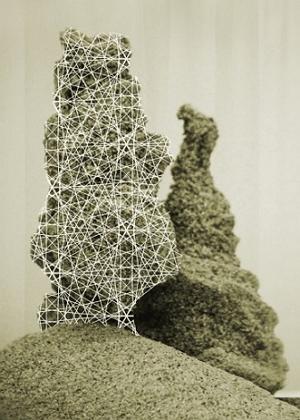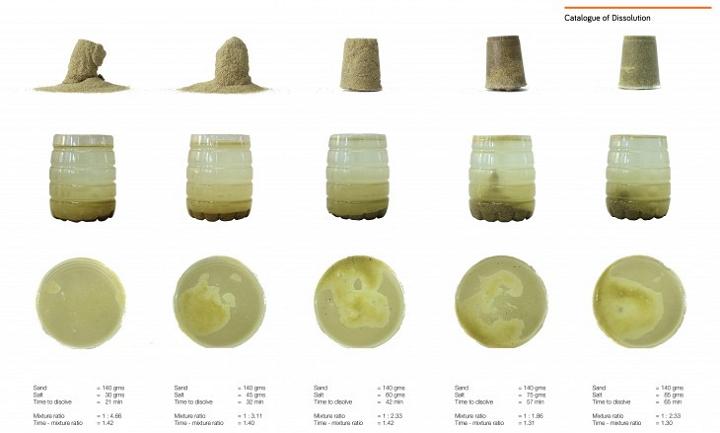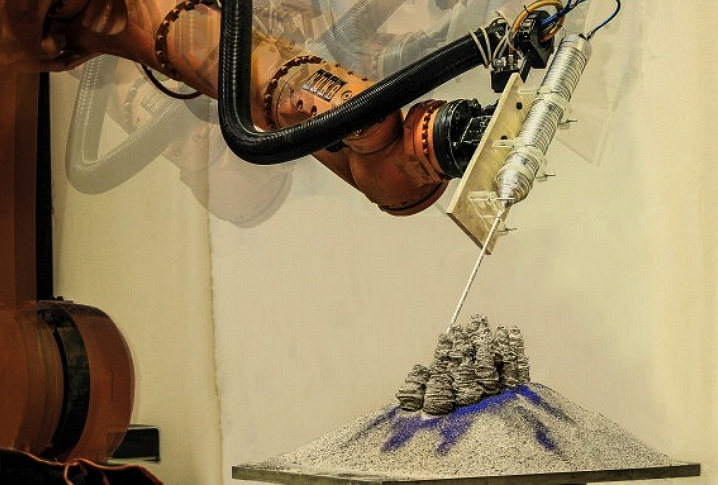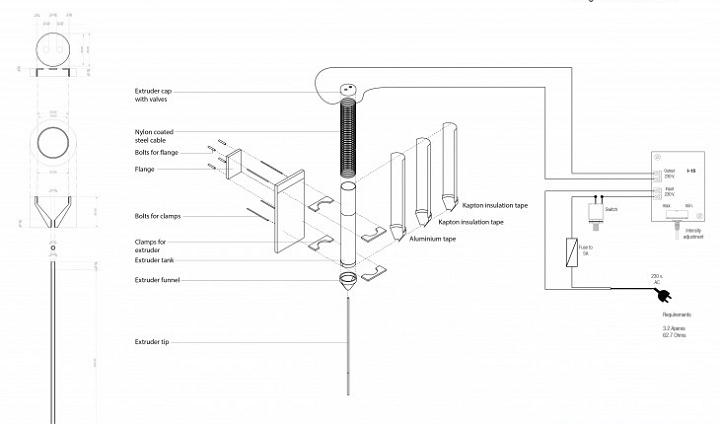The Institute for Advanced Architecture of Catalonia (IAAC) takes on cutting edge education and research to prepare students to meet the challenges regarding the construction of habitable structures. Based in Barcelona, IAAC boasts faculty and students from more than 35 countries who work on problems from understanding cities to building to manufacturing.
Students and faculty there consider various areas of expertise such as ecology, energy, digital manufacturing, and new technologies while they pursue lines of investigation as part of research projects in Brazil, Croatia, Romania, and Taiwan.
 Back in 2008, IAAC was chosen to take part in the Venice Biennale with their project, Hyperhabitat. In 2010, the school presented a 1:1 scale house at the Solar Decathlon Europe in Madrid, and they say they have the “most advanced digital production laboratory of any educational institution in Southern Europe.” The school’s toolbox includes laser cutters, 3D printers, milling machines, and a platform for manufacturing electronic components.
Back in 2008, IAAC was chosen to take part in the Venice Biennale with their project, Hyperhabitat. In 2010, the school presented a 1:1 scale house at the Solar Decathlon Europe in Madrid, and they say they have the “most advanced digital production laboratory of any educational institution in Southern Europe.” The school’s toolbox includes laser cutters, 3D printers, milling machines, and a platform for manufacturing electronic components.
Now a group of students at IAAC–Anusha Arunkumar, Kunaljit Singh Chadha, and Yessica Gabriela Mendez Sierra–are working to decode what they say is a “nano scale understanding of material behavior to shape, control and design landforms.”
According to the team, they hope that through making “small interventions through deposition of a binder into an abundant natural material” – sand – they can direct nature’s forces to control how landforms are shaped.
The project is named In:Sand, and the resulting pieces look surprisingly like ant mounds with their organic, fractal-like construction.
The project examined and tested materials from molded corn starch to sprinkled corn starch to wax and oil as binding agents. Ultimately, the team settled on sodium thiosulfate as their binding agent as it readily loses water and forms a supersaturated solution when heated in a test tube.
IAAC students also built a 3D printer on an architectural scale that creates sculptures and forms out of sand and dust by mixing sand with a variety of binding agents. The material is sprayed by a robot arm from user input or CNC toolpath.
When still a student, designer Magnus Larsson proposed a project with a similar goal; he envisioned solidifying sand with a type of bacteria and then using the ensuing structures to build a barrier in the Sahara to stop desertification and provide housing for thousands.
What do you think of the In:Sand project? Have you heard or read about any other projects that hope to use nature as a 3D printing material? Let us know in the In:Sand forum thread on 3DPB.com. Below is a video outlining, as well as more photos of, the project.
Subscribe to Our Email Newsletter
Stay up-to-date on all the latest news from the 3D printing industry and receive information and offers from third party vendors.
You May Also Like
Further Understanding of 3D Printing Design at ADDITIV Design World
ADDITIV is back once again! This time, the virtual platform for additive manufacturing will be holding the first-ever edition of ADDITIV Design World on May 23rd from 9:00 AM –...
3D Printer Maker EVO-tech Reborn as NEVO3D — Once More With Feeling
EVO-tech was a 3D printing service and original equipment manufacturer established in 2013 and based in Schörfling am Attersee, Austria. The company produced high-quality material extrusion systems featuring linear bearings,...
3D Systems Brings 3D Printed PEEK Cranial Implant to the U.S. with FDA Clearance
For more than 10 years, 3D Systems (NYSE:DDD) has worked hand-in-hand with surgeons to plan over 150,000 patient-specific cases, and develop more than two million instruments and implants from its...
CDFAM Returns to Berlin for Second Annual Symposium
The second CDFAM Computational Design Symposium is scheduled for May 7-8, 2024, in Berlin, and will convene leading experts in computational design across all scales. Building upon the first event...



































